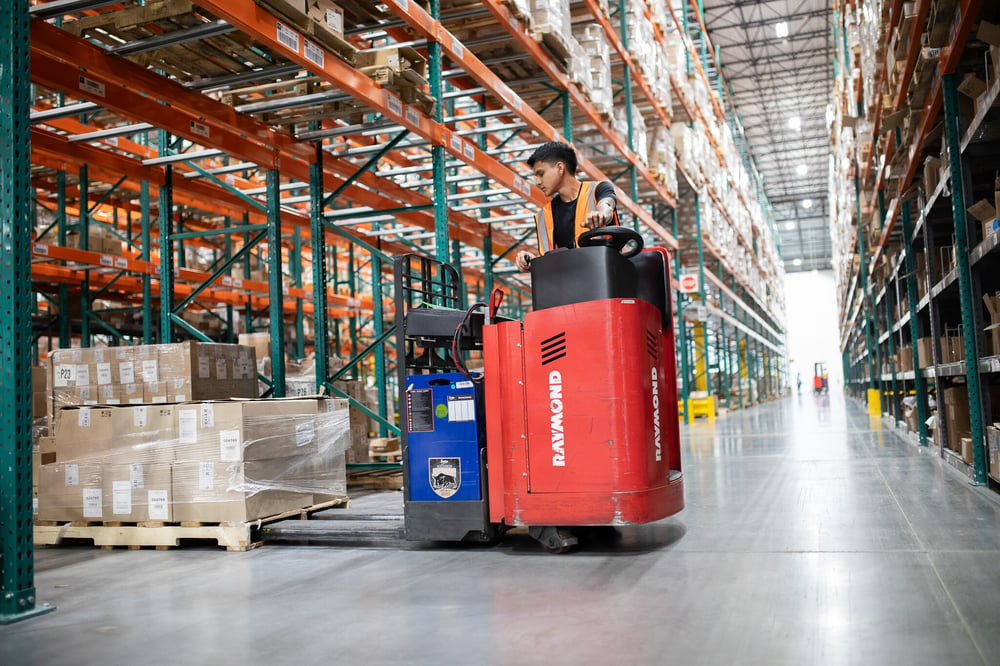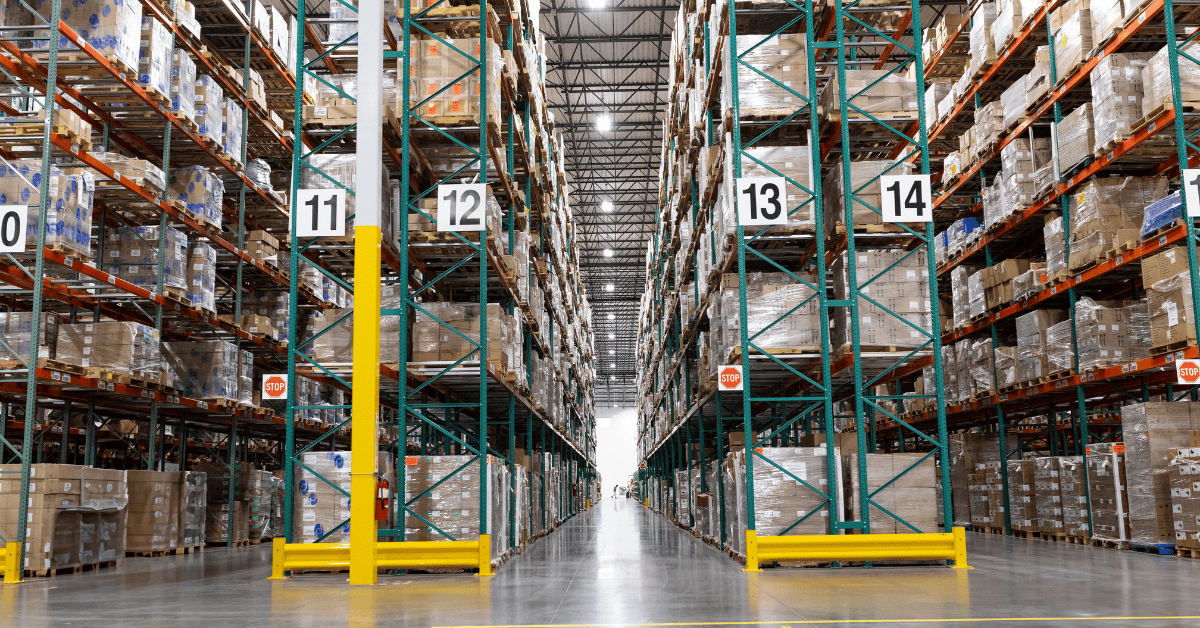THE ULTIMATE GUIDE TO SELLER FULFILLED PRIME
A primer on this Amazon program and
whether it’s right for your business
- Introduction
- What is Seller Fulfilled Prime?
- Why is Amazon pushing the Seller Fulfilled Prime Program?
- Why Sellers are moving away from Fulfillment by Amazon
- FBA, SFP, FBM
- Why Amazon Sellers are moving away from FBA
- FAQ
- Can a third-party fulfillment company fast-track a shift to Seller Fulfilled Prime?
- How do I sign up for Seller Fulfilled Prime?
A NEW OPTION FOR FULFILLMENT OF AMAZON ORDERS
As an online merchant, you need and want access to Amazon’s huge base of Prime members. Most Prime merchants use Fulfilment By Amazon (FBA) to meet the 2-day delivery requirement for Prime orders, but FBA comes with significant costs and operational limitations.
Enter Seller Fulfilled Prime, an Amazon program introduced in 2015 that allows qualified sellers to display the PRIME badge on orders fulfilled via their own warehouse or a third-party fulfillment partner.
Is Seller Fulfilled Prime right for you? This guide will provide the information you need to determine if and how you should leverage the program to cut costs and gain more control over your fulfillment process.

WHAT IS SELLER FULFILLED PRIME?
Amazon Prime is a force unto itself, with about 112 million subscribers each spending about $1,400 per year on Amazon.com
DO THE MATH.
It’s a lot of money. Anyone can sell through Amazon Marketplace, but suppliers must qualify to become Amazon Prime certified by proving that they can fulfill the Amazon Prime promise of 2-day delivery. Suppliers that use Fulfillment By Amazon (FBA, Amazon’s logistics arm) are ensured of meeting the 2-day delivery requirement. But it requires giving up control of your inventory and absorbing FBA’s high storage and delivery fees, which can seriously erode margin.
THAT’S WHERE THE SELLER FULFILLED PRIME (SFP) PROGRAM COMES IN.
This Amazon program was introduced as a reward for high-performing sellers, who were given the option of fulfilling orders
themselves if they could meet certain criteria (see inset). The program takes advantage of businesses that have a robust
fulfillment capability, either themselves or through a third-party fulfillment partner.
The key to the attractiveness of the SFP program is Amazon’s own criteria for who wins the “buy box” among multiple sellers
of the same product. The most important factor in its algorithm is “fulfillment method,” and SFP and FBA sellers are given
equal weight on this measure. That means a top-notch seller with its own fulfillment program can win the Buy Box just as often
as an FBA seller, while avoiding high FBA fees.
Criteria for Seller Fulfilled Prime
Meet or exceed requirements for Premium Shipping, after which suppliers can apply for eligibility trial for Seller Fulfilled Prime
Meet minimum thresholds for 1-day and 2-day delivery speeds, as viewed by Prime customer detail page views
On-time delivery rate of at least 93.5% for trial orders
A valid tracking rate of at least 99%
A seller-initiated cancellation rate of less than 0.5%
Minimum of 100 trial orders within 30 days


WHY IS AMAZON PUSHING THE SELLER FULFILLED PRIME PROGRAM?
Amazon has about 100 million square feet of warehouse space in the U.S. across more than 110 fulfilment centers. That doesn’t even include Prime Now hubs, Whole Food grocery DCs, delivery stations and other distribution locations.
But guess what? Amazon still doesn’t have the volume of distribution center space in high-population areas to keep pace with its sales growth. And, although Amazon is certainly in the warehousing business in a big way, its primary goal as a business is to increase online sales revenue.
The Seller Fulfilled Prime program supports this goal by allowing sellers to be responsible for their own order fulfillment. These companies can either do it themselves or through a contracted third-party fulfilment company. It doesn’t matter, as long as they meet the criteria for Amazon Prime Certified sellers.
Amazon today is less focused on warehouse expansion than it is on optimizing its current space and removing slow-moving inventory.
Want evidence? Amazon now charges monthly inventory storage fees and adds an aged inventory surcharge for products that remain in its warehouses for 180 days or more, increasing the penalty as time goes on. This is to discourage current FBA sellers from using Amazon as a long-term storage facility. Amazon’s support for the SFP program and sellers who want to handle their own fulfillment is further proof that Amazon, first and foremost, wants to grow sales, not warehousing space.
Ready to make your mark in the US?
📥 Download the eBook Now and start building your roadmap to success today!

WHY SELLERS ARE MOVING AWAY FROM FULFILLMENT BY AMAZON:
THE SHIFT TO SELLER FULFILLED PRIME
If you are doing all your own fulfilment, it’s likely worth getting certified for Seller Fulfilled Prime just for the predicted sales uptick of 30% to 40%. Sellers who fulfil their own orders love the fact that gaining Prime status makes them just as likely as FBA sellers to win the Buy Box.
High storage costs. These relatively high rates actually increase significantly during the high-sales 4th quarter. In the summer of 2018, Amazon introduced its Inventory Performance Index (IPI) as a measure for sellers to efficiently manage inventory. Bottom line: under the IPI program you’ll pay more to store slow-moving inventor and Amazon may actually limit your ability to supply Amazon more products if your IPI falls below a certain threshold.
Inability to customize. Over many years of working with growing eTailers, we found most want and need some hand-holding when initially outsourcing order fulfillment. But when you sign up with FBA, there are no planning meetings to review requirements. With FBA, they tell you how it’s done.
But perhaps the biggest growth driver for SFP has been the influx of sellers moving away from Fulfillment By Amazon due to frustrations over FBA’s high costs and operational limitations. Do a search on “FBA” within Amazon’s Seller Central Forum and you can read about some of the frustrations. Among them:
Inability to leverage inventory. If you are like most businesses, Amazon is not your only sales channel. Seller Fulfilled Prime gives you more flexibility to fulfill orders to all channels, not just Amazon.
Poor brand experience. When your package arrives at the door, you want the customer’s excitement and anticipation to be associated with your brand. When FBA ships your product, it is shipped in an Amazon box. The customer experience is around Amazon. FBA does give you the option of shipping in blank “brand neutral” boxes. But strangely, you’ll pay an additional fee to be generic.

Lack of responsiveness to smaller customers. For every growing business, exceptions arise. But when you call FBA about that truckload that needs to be received immediately to handle a rush order, it can be difficult, if not impossible, to reach a person that can actually help.
Reconciliation problems. FBA’s delivery engine is fast, but the back-end, administrative side of the organization is not. Inventory discrepancies can trigger lengthy back and forth negotiations until the seller provides unassailable documentation as evidence.

Compliance costs. Amazon has strict criteria for how products are shipped to them, with penalties for noncompliance. There is also the significant cost involved in making sure the outbound shipments to Amazon meet spec in terms of pallet configuration, labeling, etc. In some cases, this effort can be onerous. For instance, one skin care company’s product arrives at its warehouse in 6- packs, but Amazon will only take 12 packs. The cost of this re-packaging significantly cuts into this company’s margin for products sold on Amazon.
Uncertainty about sales tax nexus. Tax nexus is the requirement for companies doing business in a state to collect and pay tax on sales in that state. But what does it mean to do business in a state? At one time, it came down to physical location. Today, with the rise of eCommerce, there is no common legal agreement on state tax liability. When you use FBA, inventory is distributed across multiple warehouses and orders could be fulfilled from any of them. So, determining tax nexus is unclear. Some FBA sellers worry that, since they can’t control where Amazon puts its inventory, that they could conceivably create nexus in dozens of states.


FBA, SFP, FBM . . .
MAKING SENSE OF THE ALPHABET SOUP
There’s FBA and SFP. Now let’s throw another acronym into the mix: FBM, or Fulfilled by Merchant. It’s one of the 3 fulfillment
options that Amazon sellers have. A quick overview of each:
01/ Fulfilled By Merchant (FBM)
You are responsible for storing, picking, packing, shipping and customer service. There is no 2-day shipping requirement, since products are not designated as Prime.
02/ Fulfillment By Amazon (FBA)
Amazon stores your inventory and handles picking, packing, shipping, customer service and returns processing on your behalf.
03/ Seller Fulfilled Prime (SFP)
A combination of FBM and FBA. You get access to Prime members by virtue of a 2-day shipping capability, but you handle storing, picking and shipping on your own. Amazon handles any customer service issues, post purchase.
Which option is best for you? It depends. Here’s a high-level chart to help you decide.

WHY AMAZON SELLERS ARE MOVING AWAY FROM FBA
WHY CHOOSE SELLER FULFILLED PRIME?
Reduce fulfillment costs vs. FBA.
This benefit comes with a big “IF.” Businesses must obviously be able to run an efficient fulfilment operation, or outsource to a capable third-party logistics partner (3PL). If you’ve got that one checked, then savings can come from a reduction in:
-
Amazon compliance penalties and other fees
-
Storage costs, including long-term storage penalties
-
Freight costs, since you no longer pay to ship to Amazon warehouses prior to shipping to the buyer
Increase revenue
Sellers who move from FBM to SFP gain access to Amazon Prime members who buy more, and more often.
Lower inventory and faster cash cycle
Inventory is not tied up in Amazon warehouses. It is available to fulfill orders from all your sales channels.
Control the branding experience
Many online sellers want to orchestrate the branded customer experience – something just not possible using FBA.
Less damage
Anytime you reduce touches in the supply chain, you reduce the potential for damage.

COMMON QUESTIONS ABOUT SELLER FULFILLED PRIME
FAQ
Any order made prior to 2 p.m. the seller’s local time must ship from your warehouse the same day and be designated for 2-day transportation service. If you have multiple warehouses, your easternmost location can determine the cutoff time.
No. Specific products must be designated as either FBA or SFP.
If you ship by 2 p.m., then seller ratings are not affected by a late-arriving shipment. It is deemed the fault of the carrier and confirmed via carrier scans.
This will depend on your business. We have anecdotal evidence that savings can be 10%–25% (hard and soft costs), with 10% of the savings from avoiding Amazon fees and the balance from reduction in the resources required to prep/ship Amazon orders and manage issues that arise, such as disputes over returns or inventory.

CAN A THIRD-PARTY FULFILLMENT COMPANY FAST-TRACK A SHIFT TO SELLER FULFILLED PRIME?
The primary disadvantage of shifting from FBA to SFP is that you would need to establish your own fulfillment infrastructure. This disadvantage is easily overcome through a partnership with a national third-party logistics company (3PL) that can store your products in multiple regions of the country to maximize your number of Prime-eligible orders.
You’re basically outsourcing fulfillment to a 3PL instead of to Amazon. Only now you have complete control over all fulfillment processes. Of course, no 3PL can match FBA’s physical infrastructure, but a partner with a truly national footprint can extend your 2-day shipping capability to practically the whole country, depending on how many different inventory points you establish. By addressing the 2-day delivery capability, a 3PL lets you match an FBA seller when it comes to winning the Buy Box. At the same time, a shift from FBA to SFP avoids many of FBA’s most vexing disadvantages. See the sidebar for a summary of 3PL outsourcing.
3PLs certainly provide an alternative to FBA for national distribution while still maintaining Prime shipping status. But a 3PL can also enhance Amazon sellers that handle fulfillment themselves out of a single facility. By establishing a satellite fulfillment location using an outside partner, these sellers immediately meet the 2-day shipping requirement for a broader base of Prime buyers – and do it with little to no capital investment.
Control
Access to Prime buyers without losing control of inventory.
Know-how
3PLs can bring best practice processes from day one and offer cost-saving ideas based on their work with other B2C businesses.
Cost Savings
Storage fees tend to be lower than FBA. Also, 3PLs can help manage volume fluctuations with a variable rate structure that charges only for the space/services used in a given period.
Customization
3PLs can handle special packaging, kitting, or labeling requirements. It’s more of a “have it your way” approach.
Brand Experience
Items ship in your branded box.
Customer Service
FBA is about execution, not advice. A 3PL is about both. 3PLs work to understand your business requirements and collaborate with you to craft a powerful fulfillment capability that can make you more competitive.


OKAY, SO HOW DO I SIGN UP FOR SELLER FULFILLED PRIME?
Well, first you need to qualify. Amazon wants to protect its reputation among its best (Prime) customers, so it puts you through a trial period. The Prime badge will not be displayed on your Prime items during this trial. After a successful trial, you will be automatically activated.
Visit the SFP main page to register. You’ll be led to a Prime trial shipping template, where you can select the regions where you would like to offer Prime (2-day) delivery. You’ll also assign SKUs to your template using the “manage inventory” tool in Seller Central.
If you fail the initial trial, it may not be the worst thing since results are a good indication of your capability. If you manage to pass a difficult trial but then regularly fail to meet the shipping requirements on live orders, it can damage your seller rating. If you fail to fulfill SFP requirements during the trial, the trial period will reset automatically and you can try again.
STILL WONDERING IF SELLER FULFILLED PRIME MAKES SENSE FOR YOUR BUSINESS?
Staci Americas is the US arm of the Staci global fulfillment network. We give growing omni-channel brands the order fulfillment know-how and infrastructure to grow without limits. Staci Americas operates warehouses, coast to coast, for 1-2 day delivery to 95% of the U.S.
Contact Staci Americas today and we’d be glad to discuss the PROs and CONs as they
relate to your specific business and situation.

